- 翰林提供学术活动、国际课程、科研项目一站式留学背景提升服务!
- 400 888 0080
AQA A Level Biology复习笔记7.3.1 Genetic Variation
Genetic Variation
Phenotype variation
- The observable characteristics of an organism are its phenotype
- Phenotypic variation is the difference in phenotypes between organisms of the same species
- This variation means that the individuals within a population of a species may show a wide range of variation in phenotype
- In some cases, phenotypic variation is explained by genetic factors
- For example, the four different blood groups observed in human populations are due to different individuals within the population having two of three possible alleles for the single ABO gene
- In other cases, phenotypic variation is explained by environmental factors
- For example, clones of plants with exactly the same genetic information (DNA) will grow to different heights when grown in different environmental conditions
- Phenotypic variation can also be explained by a combination of genetic and environmental factors
- For example, the recessive allele that causes sickle cell anaemia has a high frequency in populations where malaria is prevalent due to heterozygous individuals being resistant to malaria
- The phenotypic variation of the individuals in a population is determined by the genetic variation within the population and the interaction of the environment on the individuals:
Phenotypic variation = Genetic variation + Environment
Genetic variation
- Organisms of the same species will have very similar genotypes, but two individuals (even twins) will have differences between their DNA base sequences
- Considering the size of genomes, these differences are small between individuals of the same species
- The small differences in DNA base sequences between individual organisms within a species population is called genetic variation
- Genetic variation is transferred from one generation to the next and it generates phenotypic variation within a species population
- The primary source of genetic variation is mutation (changes in the DNA base sequence)
- Mutation results in the generation of new alleles
- The new allele may be advantageous, disadvantageous or have no apparent effect on phenotype
- New alleles are not always seen in the individual that they first occur in
- They can remain hidden (not expressed) within a population for several generations before they contribute to phenotypic variation
- Genetic variation is also caused by the following processes as they result in a new combination of alleles in a gamete or individual:
- Crossing over of non-sister chromatids during prophase I of meiosis
- Independent assortment of homologous chromosomes during metaphase I of meiosis
- Random fusion of gametes during fertilization
Crossing over
- Crossing over is the process by which non-sister chromatids exchange alleles
- Process:
- During meiosis I homologous chromosomes pair up and are in very close proximity to each other
- The non-sister chromatids can cross over and get entangled
- These crossing points are called chiasmata (singular = chiasma)
- The entanglement places stress on the DNA molecules
- As a result of this a section of chromatid from one chromosome may break and rejoin with the chromatid from the other chromosome
- This swapping of alleles is significant as it can result in a new combination of alleles on the two chromosomes
- There is usually at least one chiasma present in each bivalent during meiosis but often there are multiple chiasmata
- Crossing over is more likely to occur further down the chromosome away from the centromere
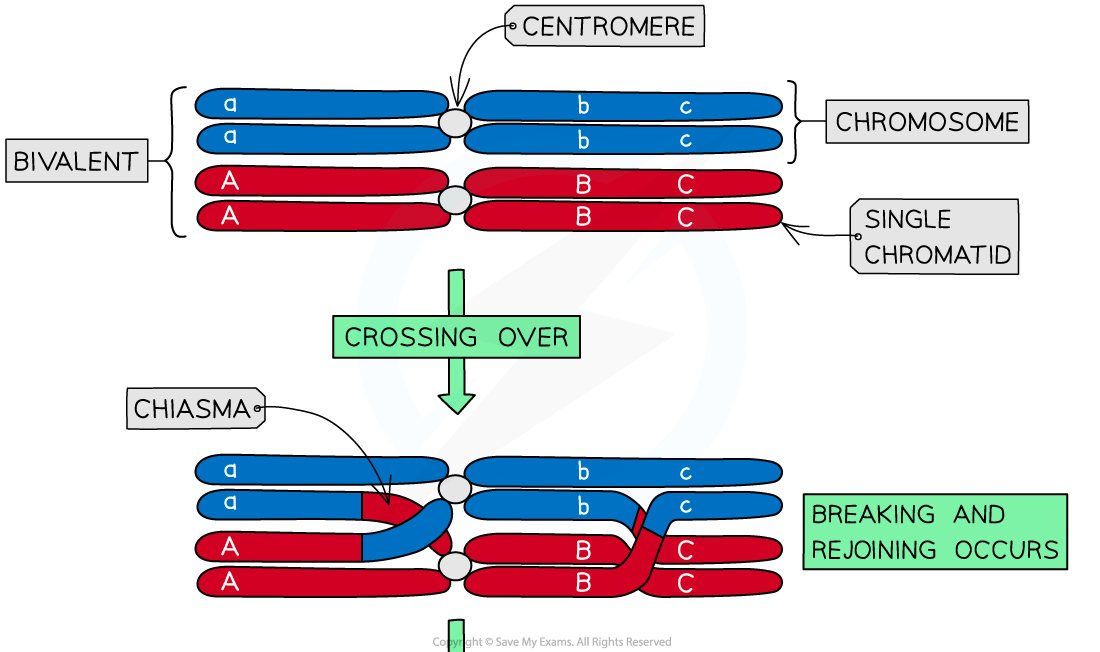
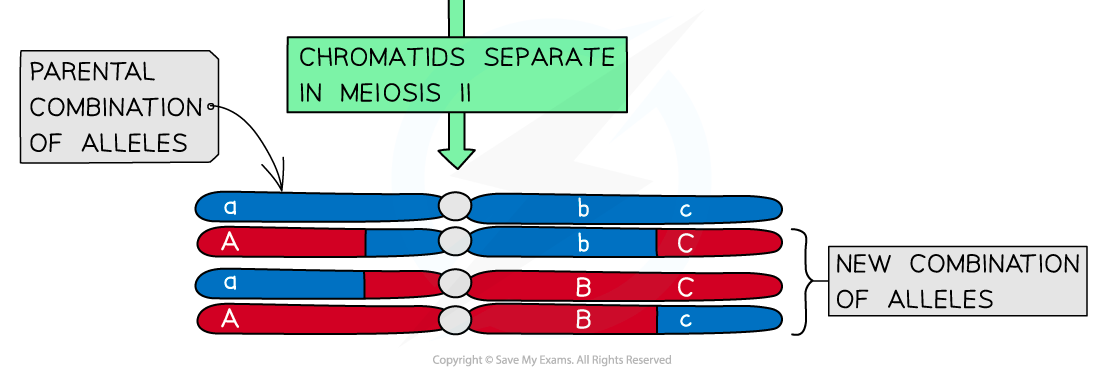
Crossing over
Independent assortment
- Independent assortment is the production of different combinations of alleles in daughter cells due to the random alignment of homologous pairs along the equator of the spindle during metaphase I
- The different combinations of chromosomes in daughter cells increases genetic variation between gametes
- In prophase I homologous chromosomes pair up and in metaphase I they are pulled towards the equator of the spindle
- Each pair can be arranged with either chromosome on top, this is completely random
- The orientation of one homologous pair is independent / unaffected by the orientation of any other pair
- The homologous chromosomes are then separated and pulled apart to different poles
- The combination of alleles that end up in each daughter cell depends on how the pairs of homologous chromosomes were lined up
- To work out the number of different possible chromosome combinations the formula 2n can be used, where n corresponds to the number of chromosomes in a haploid cell
- For humans this is 223 which calculates as 8,324,608 different combinations
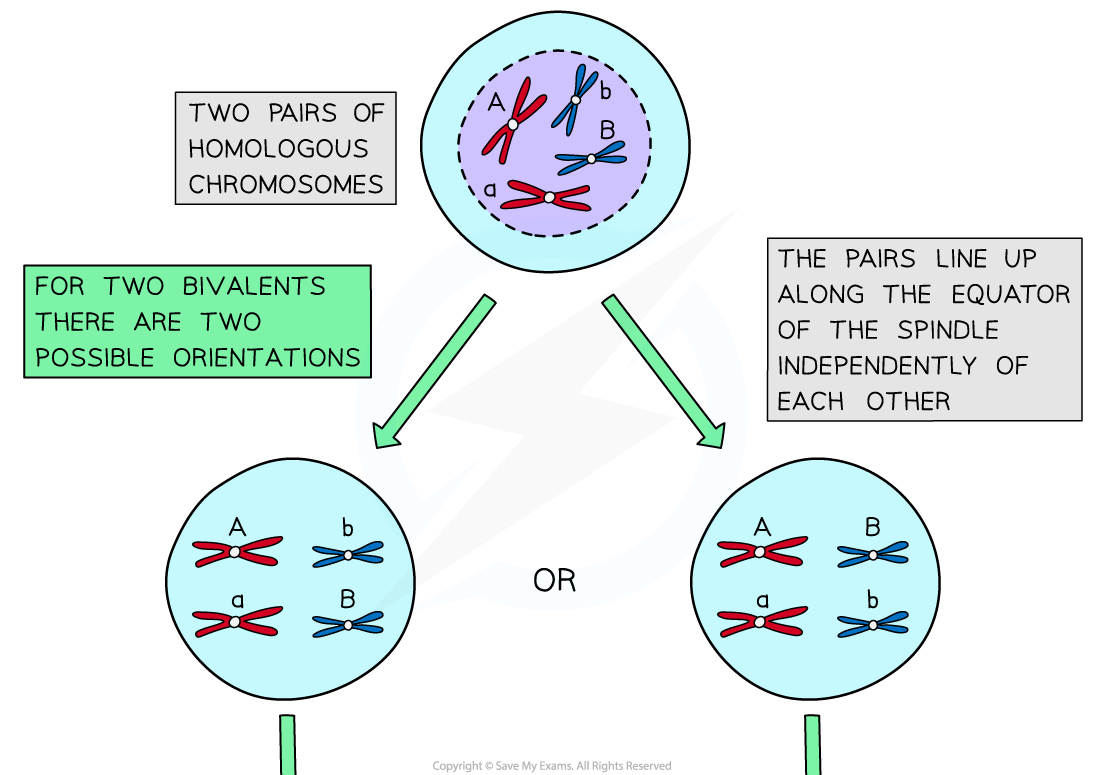
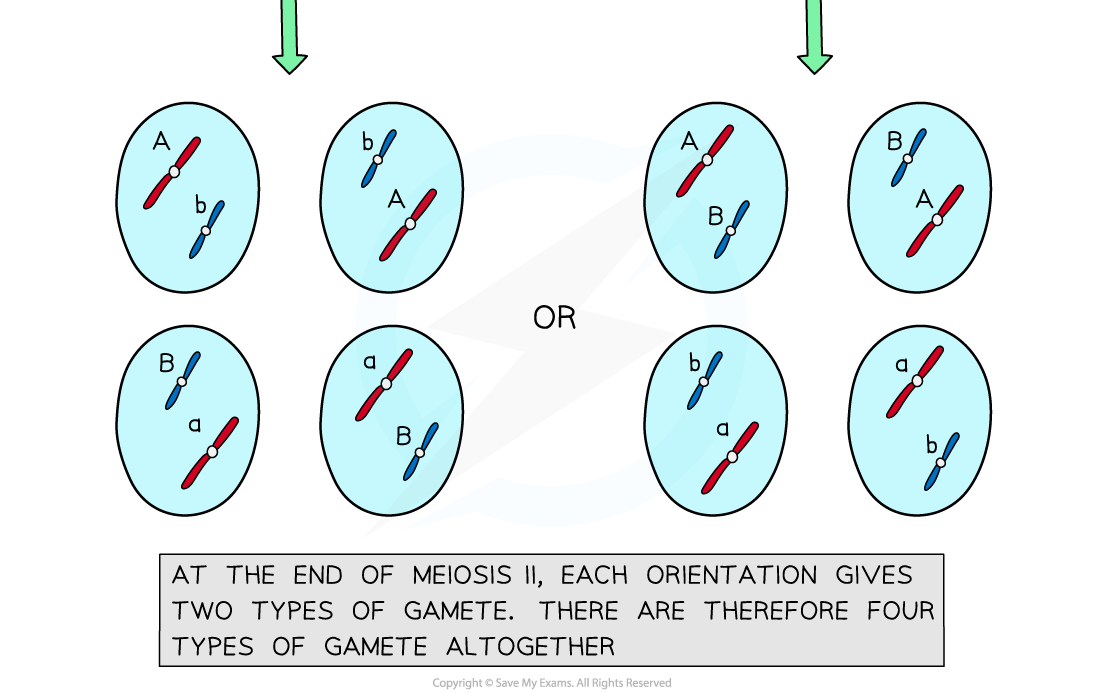
Independent assortment
Random fertilisation of gametes
- Meiosis creates genetic variation between the gametes produced by an individual through crossing over and independent assortment
- This means each gamete carries substantially different alleles
- During fertilization any male gamete can fuse with any female gamete to form a zygote
- This random fusion of gametes at fertilization creates genetic variation between zygotes as each will have a unique combination of alleles
- There is an almost zero chance of individual organisms resulting from successive sexual reproduction being genetically identical
Sources of genetic variation table
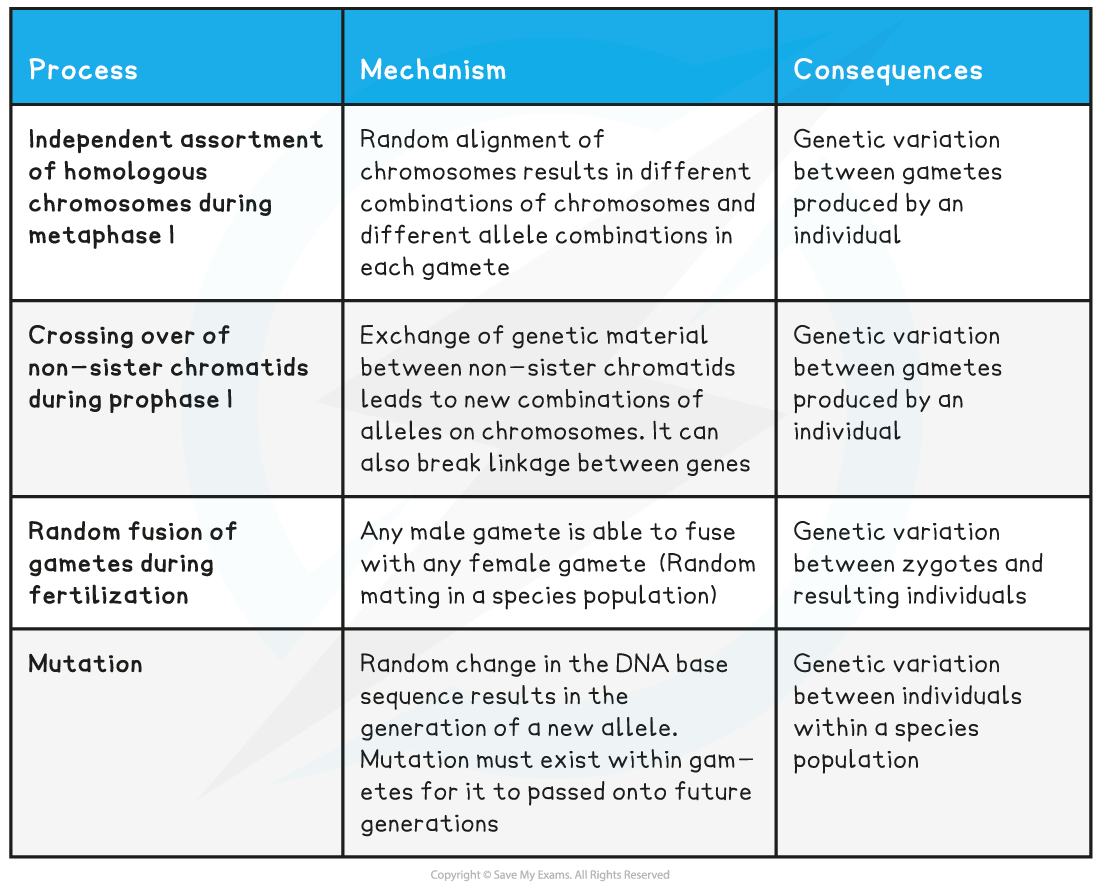
转载自savemyexams

早鸟钜惠!翰林2025暑期班课上线

最新发布
© 2025. All Rights Reserved. 沪ICP备2023009024号-1








